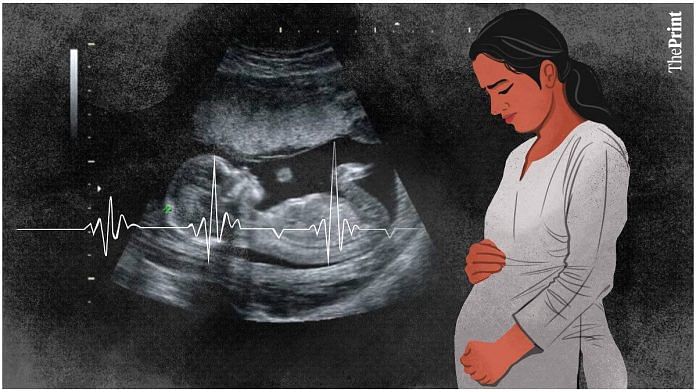The World Health Organisation (WHO) defines maternal death as the death of a woman while pregnant or within 42 days of termination of her pregnancy, irrespective of the duration and site of pregnancy.
The maternal mortality ratio in India has consistently been declining over the past few years. It stood at 130 deaths per one lakh live births in 2014-16, whereas it stood at 88 in 2020-22.
Another data point that supports the declining maternal deaths is the maternal mortality rate, which has come down to five in 2020-2022 from six in 2019-21. Unlike maternal mortality ratio, the maternal mortality rate is the maternal deaths in women aged 15-49 years (reproductive age) per lakh of women in that age group.
Jashodhara Dasgupta, an independent researcher working on public health, told ThePrint, “Maternal mortality ratio would continue to decline in India as women are having fewer pregnancies as education levels are improving.”
Another reason for the decline in the maternal mortality ratio could be that “the private health sector, where doctors are more capable of handling complicated cases, is attending to more and more pregnancy-related complications”, Dasgupta added.
Dr Subha Sri Balakrishnan from CommonHealth, a coalition working on maternal health and safe abortions, told ThePrint, “It is commendable that India is showing a steady reduction in maternal mortality over the last several years. Several states have already achieved the SDG (Sustainable Development Goals) target of reducing maternal mortality to 70 by 2030.”
The report categorised Indian states into three groups: the Empower Action Group (EAG), Southern States, and Other. Bihar, Jharkhand, Madhya Pradesh, Chhattisgarh, Odisha, Rajasthan, Uttar Pradesh, Uttarakhand, and Assam fall in the EAG. Andhra Pradesh, Telangana, Karnataka, Kerala, and Tamil Nadu fall within the category of Southern States—as the name suggests. The remaining states and Union Territories fall within the Other category.
The maternal mortality ratio is declining in India overall, but a few states are holding the country back.
According to the latest data, states that saw a rise in maternal mortality ratio in 2020-22 included Chhattisgarh from 131 in 2019-21 to 141 in 2020-22, Odisha from 135 in 2019-21 to 136 in 2020-22, Uttarakhand from 100 to 104 in the same period, Gujarat from 53 to 55, Telangana from 45 to 50, and Andhra Pradesh from 46 to 47.
Among the states, maternal mortality ratio for Andhra Pradesh and Telangana have been consistently growing over the past three years under consideration. In the 2018-20 report, ratio for Andhra Pradesh was 45, whereas it was 43 for Telangana.
According to experts, most maternal deaths in India occur due to complications. One factor that can increase the complications among pregnant women is anaemia. The National Family Health Survey-5 results showed that 52.2 percent of pregnant women aged 15-49 years have anaemia.
Dasgupta said: “A doctor would not operate on a severely anaemic patient unless there is a blood transfusion, and many district hospitals in India do not have blood transfusion services.”
Despite seeing improvement in MMR from previous years, Madhya Pradesh logged the highest maternal deaths, at 159 per one lakh live births, followed closely by Chhattisgarh.
Assam, which—at 195—topped the list of states with the highest maternal mortality ratio (MMR) in 2018-20, saw the maximum improvement, as its MMR dropped to 125 in 2020-22 from 167 in 2019-21.
However, Subha Sri Balakrishnan from CommonHealth said, “There is a need for more nuanced data on MMR which identifies districts where maternal deaths are high and also categories of women, who are highly impacted by this, which would help in implementing programmes that specifically address the issues of these women and cater to their needs.”
The sample registration system (SRS) data released for 2020-22 showed that women aged 20-24 years accounted for the highest proportion of maternal deaths, at 32 percent, and those aged 25–29 years for the second-highest share, at 31 percent.
The proportion of maternal deaths declined with an increase in the age group. Women aged between 35-49 years accounted for only 10 percent of maternal deaths in the country.
“This age-related dataset is expected, as most women get pregnant in the age group of 20-29 years. The tragedy of maternal mortality is that young women in their prime are dying due to maternity-related issues, almost all of which are preventable,” said Dr Balakrishnan.
Another data point in the report showed that younger women are more prone to death due to maternal causes rather than non-maternal causes. In 2020-22, 22 percent of women aged between 20-29 years died due to non-maternal causes compared to 63 percent of women who died due to maternal health issues.
While 24 percent of women in the age bracket of 45-49 years died due to non-maternal related causes, compared to just one percent of them passing away due to maternal-related issues.
(Edited by Madhurita Goswami)








